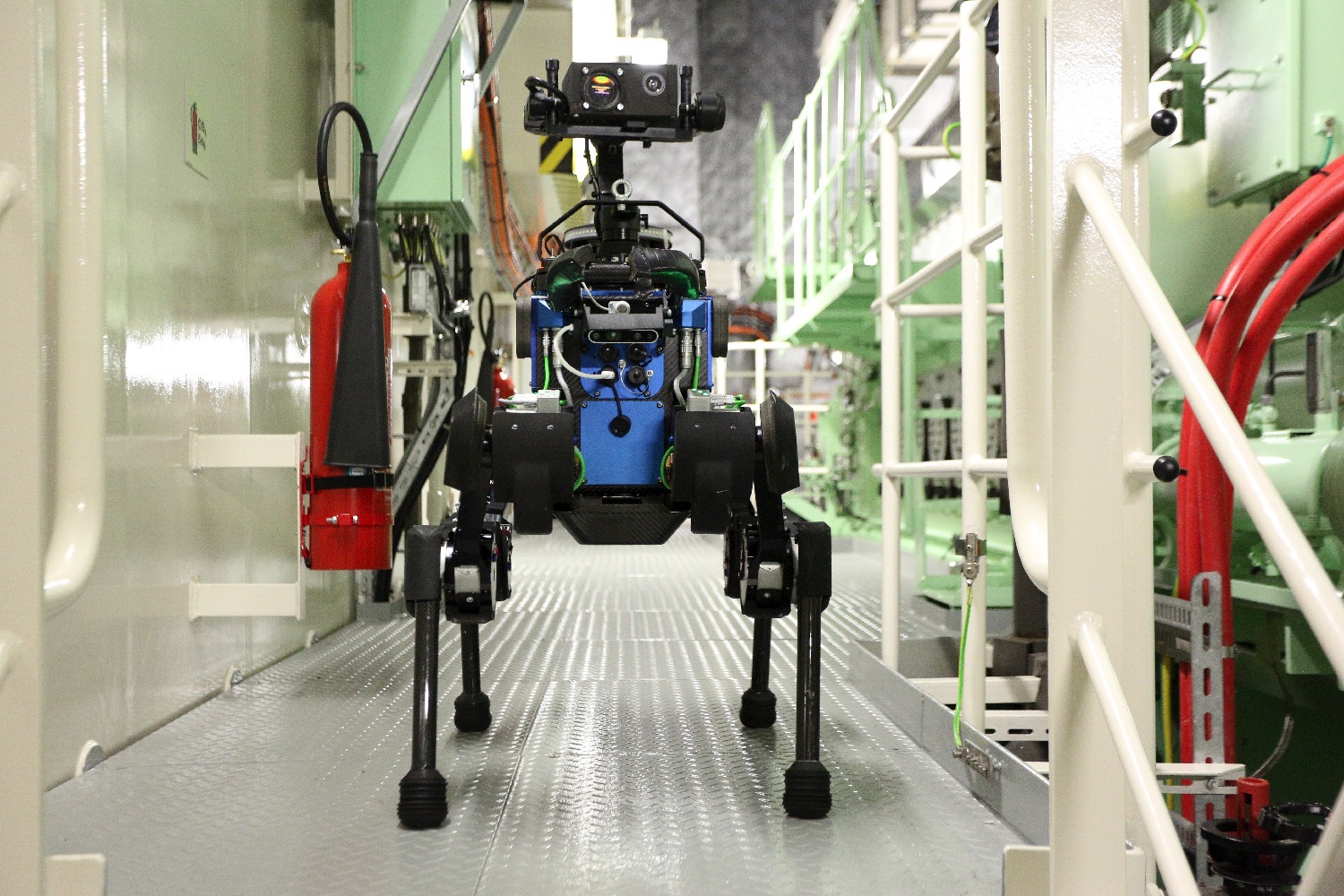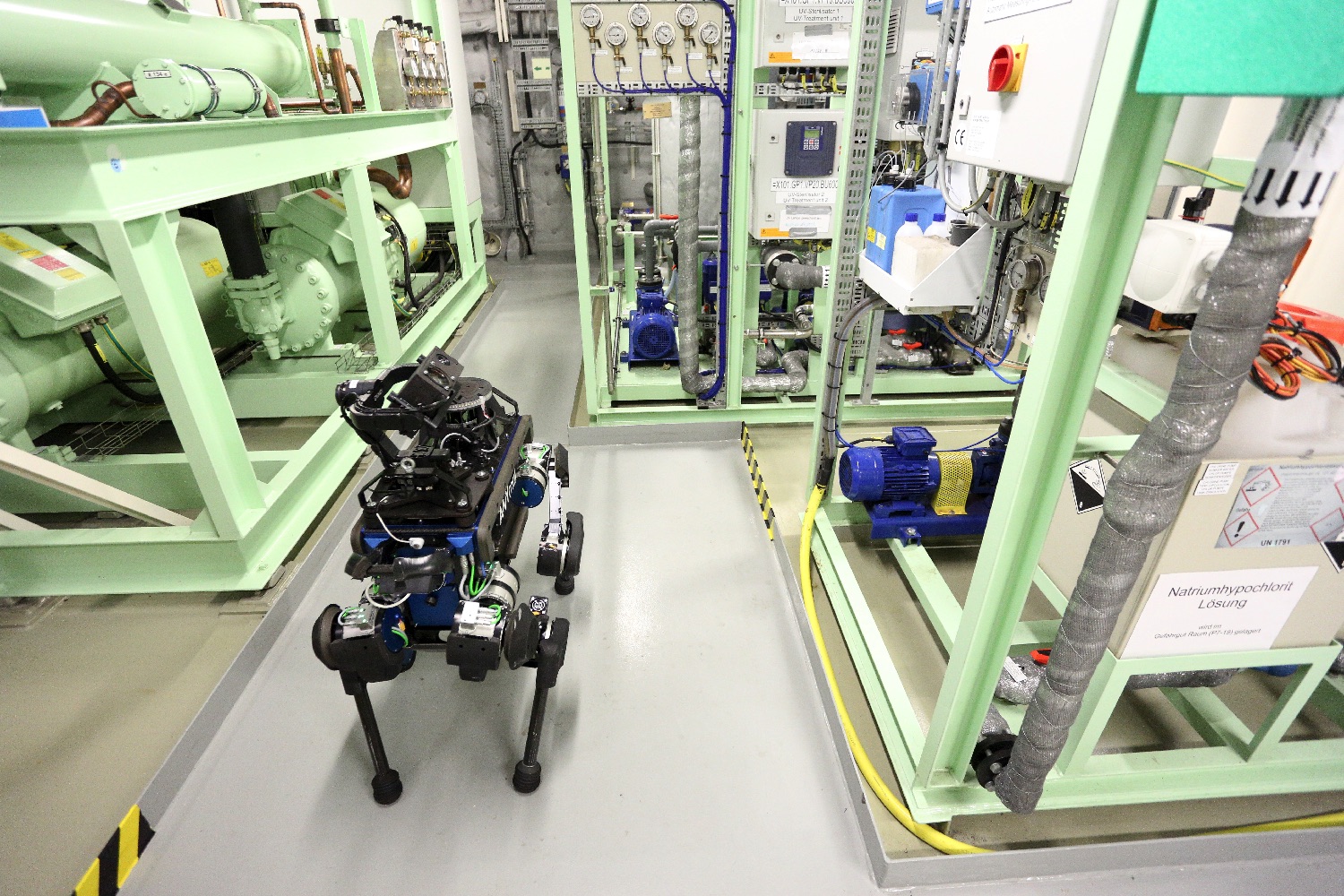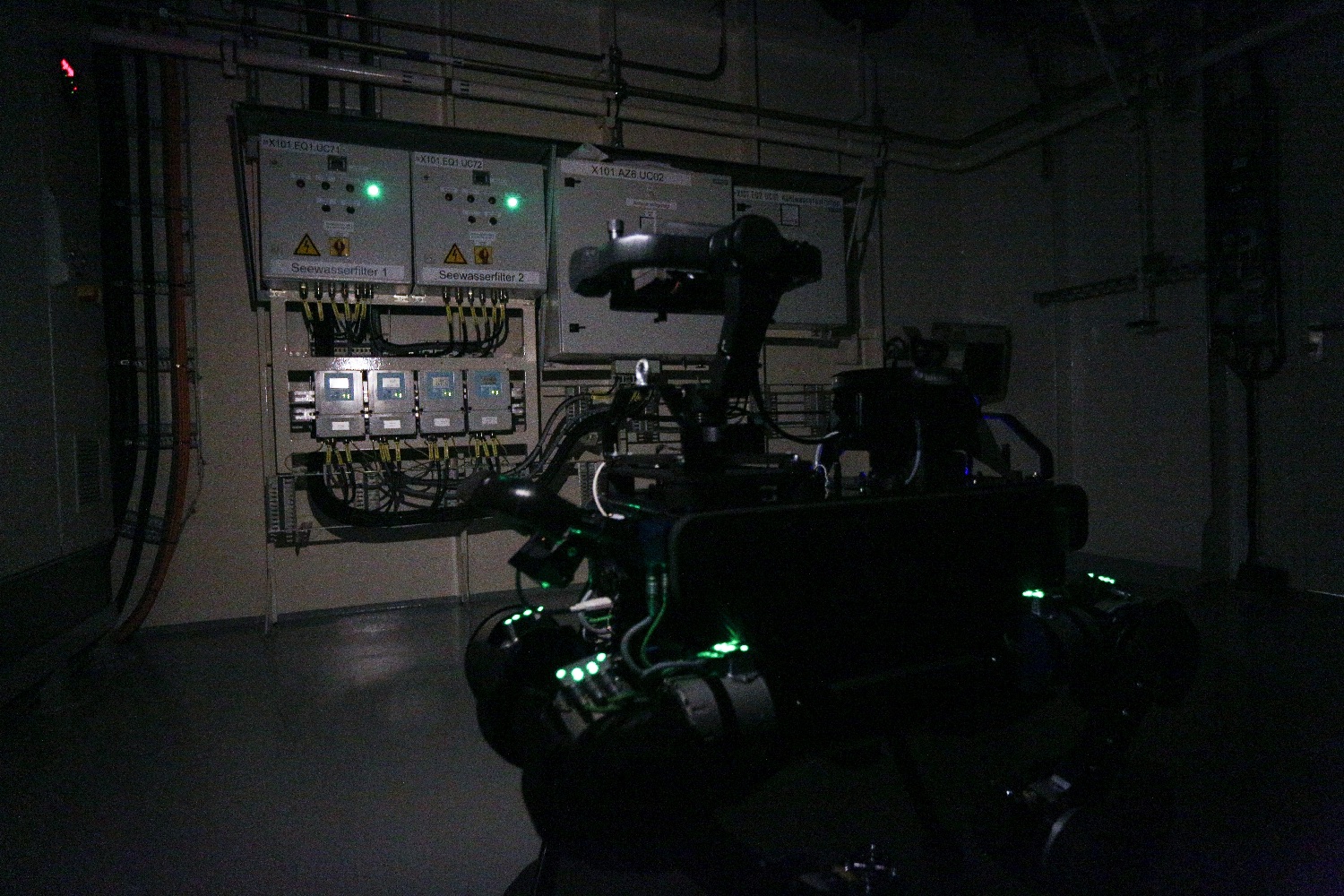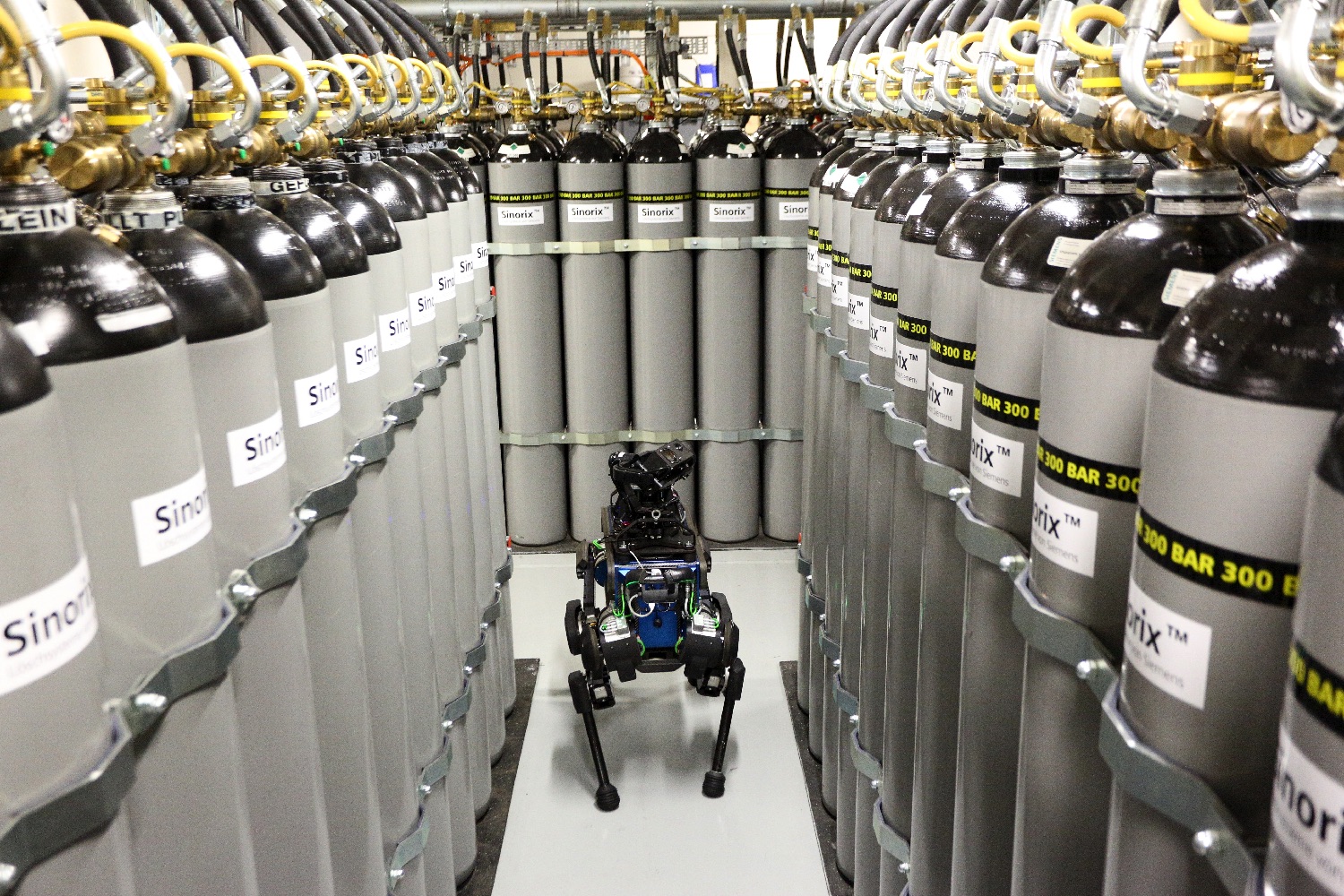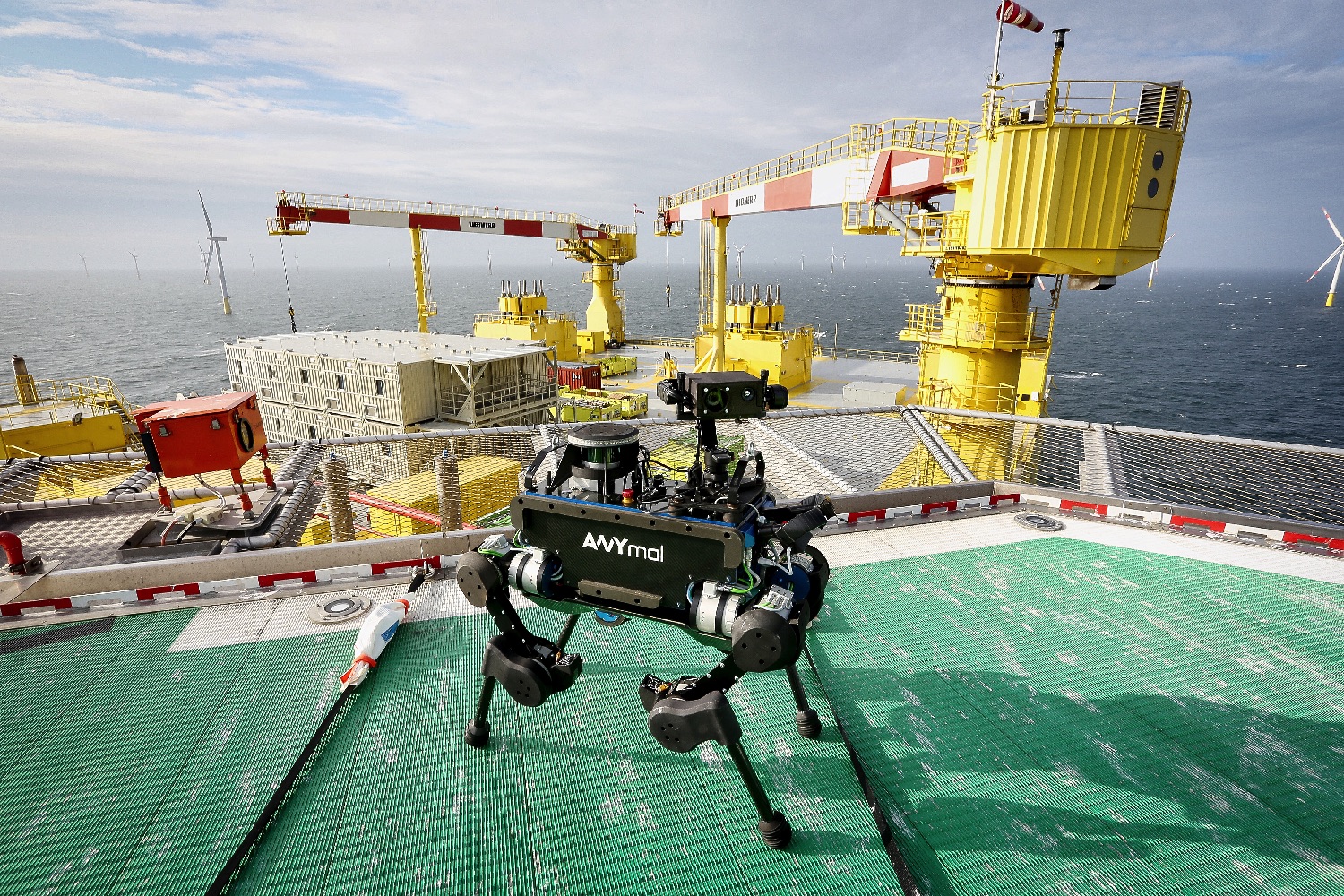Quadruped robots like Boston Dynamics’ various canine-inspired bots have been wowing the world for years. But like plenty of the other impressive robotics projects we see on a regular basis, so far they have remained mostly confined to the lab or limited outdoor tests. But some quadruped robots are already proving their worth in a real-world, commercially useful setting, as demonstrated by ANYbotics, a Swiss robotics startup that spun off from ETH Zurich’s Robotic Systems Lab.
The company’s autonomous ANYmal quadruped robot (quadrobot?) recently underwent a one-week trial carrying out inspection tasks on one of the world’s largest offshore power-distribution platforms in the North Sea. This involved covering a total of 16 inspection points, including checking gauges, levers, oil and water levels, and assorted other visual and thermal measurements.
“The main task for the robot is to reliably and regularly gather information about the current state of operation,” Péter Fankhauser, ANYbotics co-founder and chief business development officer, told Digital Trends. “ANYmal can carry up to 10 kilos in payload, and for this installation, [it] has been equipped with a range of inspection sensors. The movable inspection head contains a visual and thermal camera to provide a video feed for general situational awareness to the operator. At predefined checkpoints, ANYmal takes high-resolution pictures and interprets the results, such as reading the indicator of a pressure gauge and checking the temperature of critical machine components. Additionally, a microphone and lidar scanner are used to gather further information about the environment.”
The quadrobot shows impressive maneuvering abilities. It can climb up and down stairs, as well as over obstacles, and crawl through narrows spaces. This puts it at an advantage over wheeled or tracked robots. The robot is also impressively tough, with a rugged, waterproof design — and a dock that allows for automatic recharging without human intervention.
While it’s clearly found a job for the foreseeable future in the North Sea, Fankhauser notes that there are additional tasks ANYmal is more than equipped to carry out.
“We are using ANYmal for data-acquisition and surveillance tasks in mines, sewage systems, construction sites, agriculture, forestry, and other applications with challenging environments,” he said. “Other applications are delivery and simple maintenance with the help of a robot arm on ANYmal. The range of applications will continue to grow together with the capabilities of the robot.”
Editors' Recommendations
- Dog-like Spot robot gets a gig to scare wildlife
- Police robots put on permanent patrol at Singapore airport
- The iRobot Roomba j7+ monitors your floors to avoid wires, pet droppings
- Xiaomi’s CyberDog looks remarkably like Boston Dynamics’ Spot
- Samsung JetBot 90 A.I.+ is a mini tank-like robot vacuum with a camera
